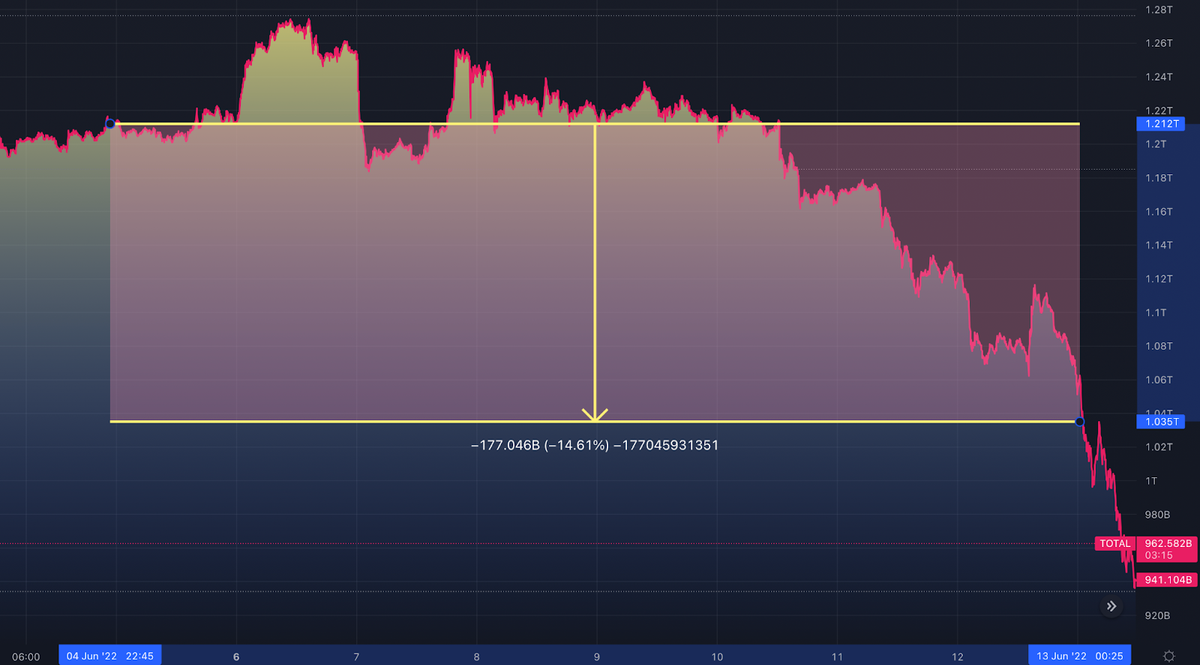The Derivatives Magazine #5

Most of last week was fairly quiet for the crypto market – the focus of traders and investors was kept on an important block of economic statistics scheduled for the end of the week. The Consumer Price Index (CPI) data had a strong impact on inflation indicators and could have a decisive influence on this week’s Federal Reserve meeting. The published data turned out to be considerably worse than expected (the overall index rose by 8.6% instead of the anticipated decline) and in almost all categories apart from services the values were greater than the stock market participants’ consensus forecasts. The subsequent decline in global markets accelerated over the weekend for crypto assets and turned into a near-panic sell-off at the start of the current week.
According to the Coinglass analytical service, the volume of liquidations in the last three days amounted to more than 1 billion, with predominantly long position liquidations, affecting more than 240 000 traders. Unlike the usual sharp and impulsive market declines, this time the decline stretched over several days. A major reason was subsequent news related to big crypto capital in the Defi sphere. First, stETH, a liquid version of Ethereum placed in LIDO’s next ETH2.0 contract lost its peg to the original ETH, and then, a drop in the market price threatened to liquidate Celsius’ position (over $12 billion under management) placed in DeFi protocols AAVE and Maker worth over 19k BTC and 200k stETH.
The liquidation of such large positions could significantly exacerbate an already difficult market situation and lead to cascading liquidations across the entire crypto ecosystem.
The situation on the perpetual futures market could not consolidate for the second week in a row. The current events underline the local nature of price movements, with the market lacking formed general expectations, which leaves room for a reversal of the movement and the start of consolidation. Given the large amount of negative news about individual major projects, we can conclude that there is a deliberate strategy by individual major players to redistribute ownership of crypto assets in anticipation of further industry developments. The funding rate differential from -16% p.a. on Binance to +11% p.a. on DYDX creates atypically high-yield opportunities for arbitrage and delta-neutral strategies implemented on various platforms.
In the futures trading market, the rate is more consolidated. The yield on the funding rate ranges from -3%(Binance) to +4%(OKEX) for contracts with an execution date at the end of June. The trading volume of almost all contracts increased significantly and rose by 50%-150%.
Open positions for all BTC futures decreased by 20% compared to the previous week and amounted to 10 billion USD, while trading volume almost doubled on Monday’s trading session to 120 billion USD.
In the ETH market, the trading situation is similar to that of BTC – a decrease of around 20% in open interest and a multiple (threefold) increase in trading volume within a single session.
Taken together, such indications further underline the epic nature of the price changes taking place. Monday’s “Super Black” trading session was one of the most turbulent in terms of price declines and market reaction to upcoming macroeconomic changes.
Most of the large publicly traded BTC holders are currently in a position of unrealized losses, and whether their positions will be fixed on the spot market remains an open question.
According to the Glassnode analytical service, there are now two groups of large buyers with unrealized losses in the market: those participants who entered around the 30 000 level (about 1.5 million BTC), and the 40 000 level (excluding exchange-traded wallets – about 2 million BTC). The potential capitulation of these categories could further collapse the price and lead to a much more catastrophic market decline.
However, from the perspective of past price movement cycles, such situations are inevitable before the next growth period begins. The changing ownership structure of crypto assets is part of the overall process of liquidity spillovers between the various financial markets. The only question that remains open is how long the current situation of extra high volatility and uncertainty will persist.
This overview was prepared by the analytics department of the Biqutex crypto derivatives exchange



